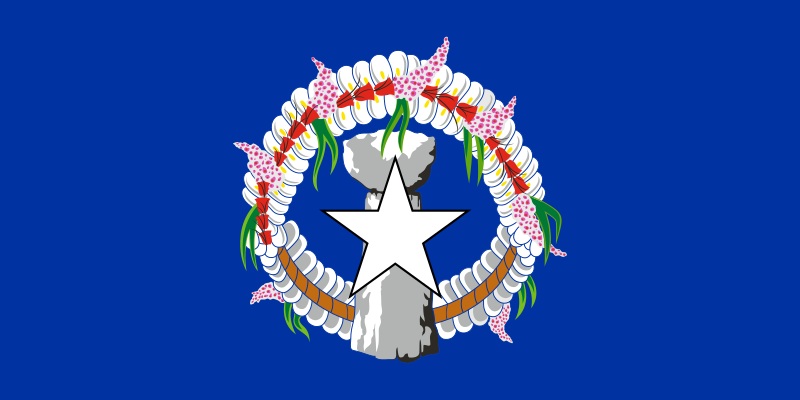 The Northern Mariana Islands, officially the Commonwealth of the Northern Mariana Islands (CNMI), is a commonwealth in political union with the United States, occupying a strategic region of the western Pacific Ocean.
The Northern Mariana Islands, officially the Commonwealth of the Northern Mariana Islands (CNMI), is a commonwealth in political union with the United States, occupying a strategic region of the western Pacific Ocean.
It consists of fifteen islands about three-quarters of the way from Hawaii to the Philippines, at 15°1′2″N 145°4′5″E. The United States Census Bureau reports the total land area of all islands as 179.01 square miles (463.63 km2).
The Northern Mariana Islands has a population of 80,362 (2005 estimate). The official 2000 census count was 69,221.
More than 90% of the population lives on the island of Saipan. Of the fourteen other islands, only two – Tinian and Rota – have a significant population. The islands of Agrihan and Alamagan have fewer than ten residents each, and the remaining islands are unpopulated.
The Commonwealth’s center of government is in the village of Capitol Hill on Saipan. As the island is governed as a single municipality, most publications name Saipan as the Commonwealth’s capital.
The Commonwealth of the Northern Mariana Islands benefits from substantial subsidies and development assistance from the federal government of the United States. The economy also relies heavily on tourism, especially from Japan, and the rapidly dwindling garment manufacturing sector. The tourism industry has also been dwindling since late 2005. Since late 2006, tourist arrivals fell 15.23% (73,000 potential visitors) from the eleven months prior.

Notes from Wikipedia








